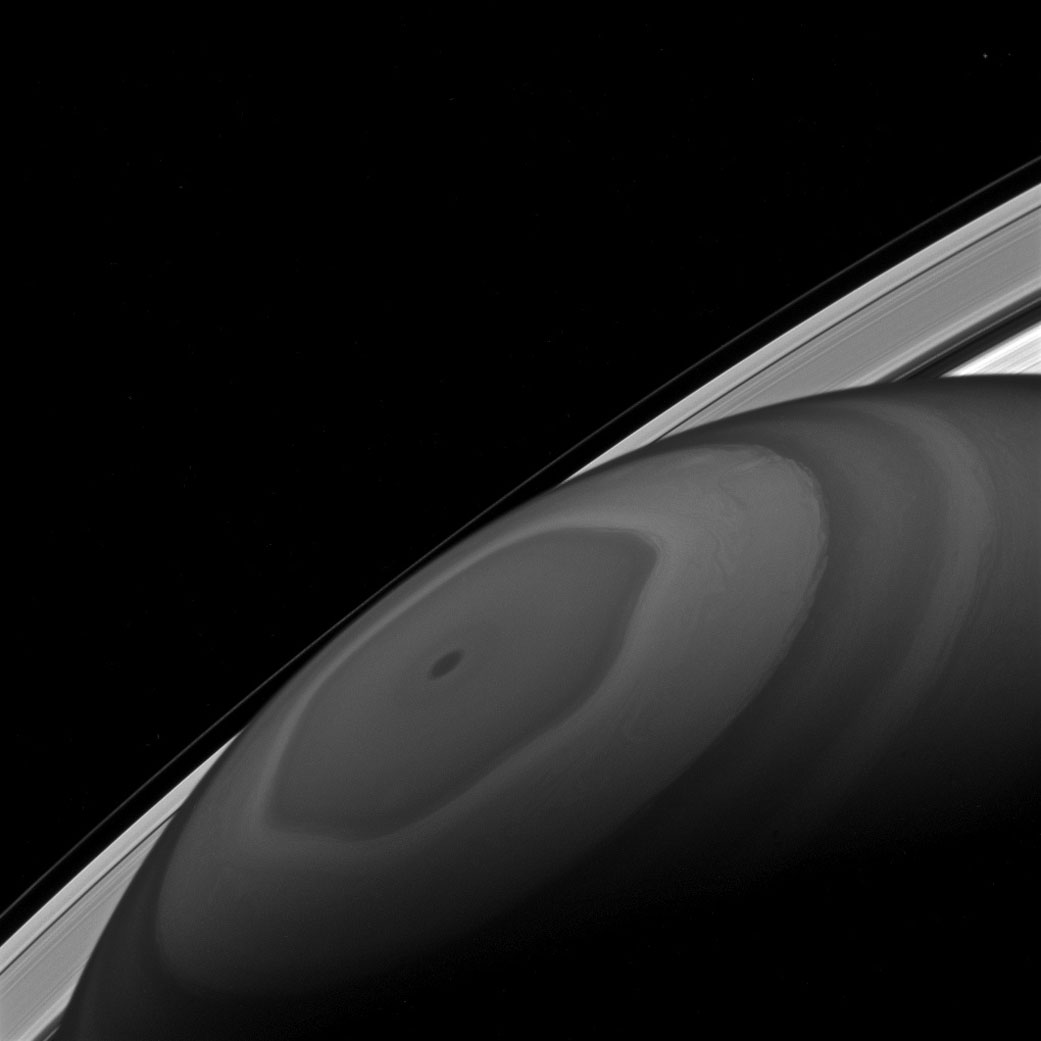Saturn's Mysterious Hexagon Gets a Close-Up in New Cassini Photo

Saturn's north pole sits smack-dab in the center of a strange, six-sided feature that scientists don't quite understand, and a new photo shines the spotlight on this mysterious feature.
NASA's Cassini spacecraft, which has been orbiting Saturn since 2004, has taken several photos of this weird geometry that dominates Saturn's north pole. This close-up was captured with Cassini's wide-angle camera on Dec. 2, 2016, and was released today (Feb. 27). At the time the image was captured, Cassini was about 619,000 miles (996,000 kilometers) away from Saturn.
"The north pole of Saturn sits at the center of its own domain," NASA officials said in a statement. "Around it swirl the clouds, driven by the fast winds of Saturn. Beyond that orbits Saturn's retinue of moons and the countless small particles that form the ring." [Saturn's Strange Hexagon in Photos]
Despite Saturn's spherical shape, belt-like cloud bands and round rings, not everything around the gas giant shares these characteristic curves.
"Some of the jet-stream patterns, such as the hexagon-shaped pattern seen here, have wavy, uneven shapes," NASA officials said in the statement. "The moons, as well, have orbits that are elliptical, some quite far from circular."
Scientists suspect that Saturn's hexagon is the result of a shallow jet stream that is being supported by winds that rotate below.
After nearly 13 years at Saturn, the Cassini mission is nearing its grand finale. On Sept. 27, the spacecraft will plunge into the planet's atmosphere for a planned crash landing. Cassini will continue to beam back incredible close-up shots of Saturn and its many moons until the very end.
Get the Space.com Newsletter
Breaking space news, the latest updates on rocket launches, skywatching events and more!
Email Hanneke Weitering at hweitering@space.com or follow her @hannekescience. Follow us @Spacedotcom, Facebook and Google+. Original article on Space.com.
Join our Space Forums to keep talking space on the latest missions, night sky and more! And if you have a news tip, correction or comment, let us know at: community@space.com.

Hanneke Weitering is a multimedia journalist in the Pacific Northwest reporting on the future of aviation at FutureFlight.aero and Aviation International News and was previously the Editor for Spaceflight and Astronomy news here at Space.com. As an editor with over 10 years of experience in science journalism she has previously written for Scholastic Classroom Magazines, MedPage Today and The Joint Institute for Computational Sciences at Oak Ridge National Laboratory. After studying physics at the University of Tennessee in her hometown of Knoxville, she earned her graduate degree in Science, Health and Environmental Reporting (SHERP) from New York University. Hanneke joined the Space.com team in 2016 as a staff writer and producer, covering topics including spaceflight and astronomy. She currently lives in Seattle, home of the Space Needle, with her cat and two snakes. In her spare time, Hanneke enjoys exploring the Rocky Mountains, basking in nature and looking for dark skies to gaze at the cosmos.
